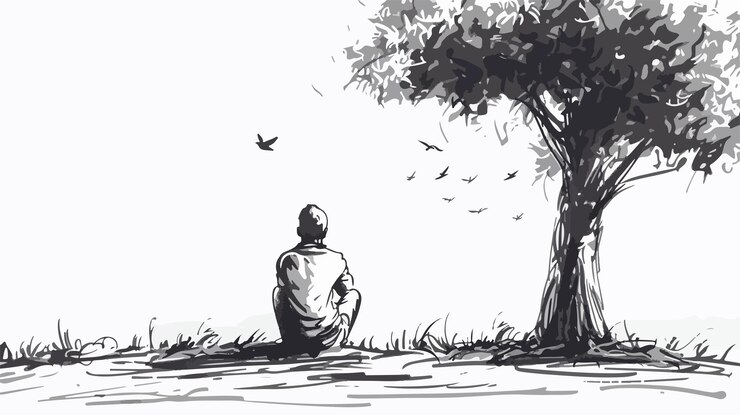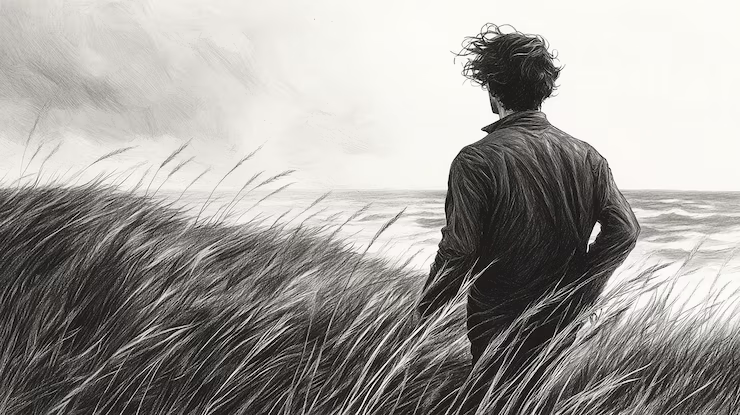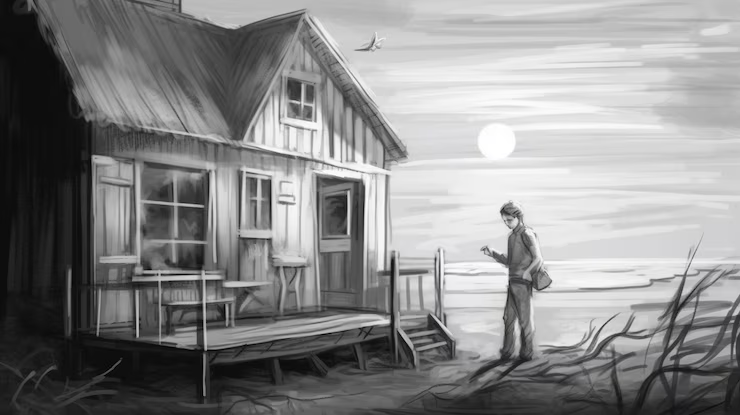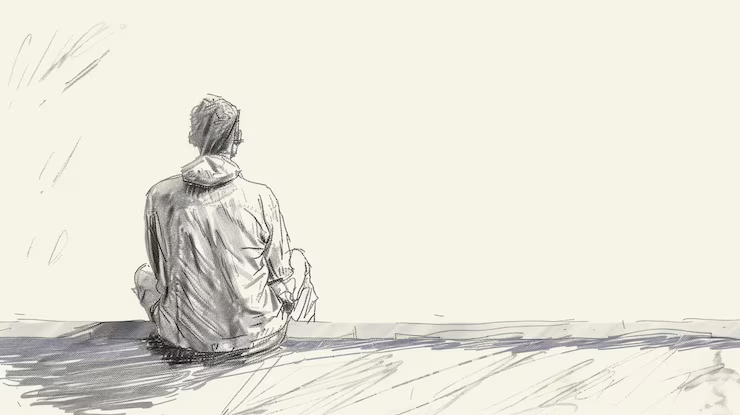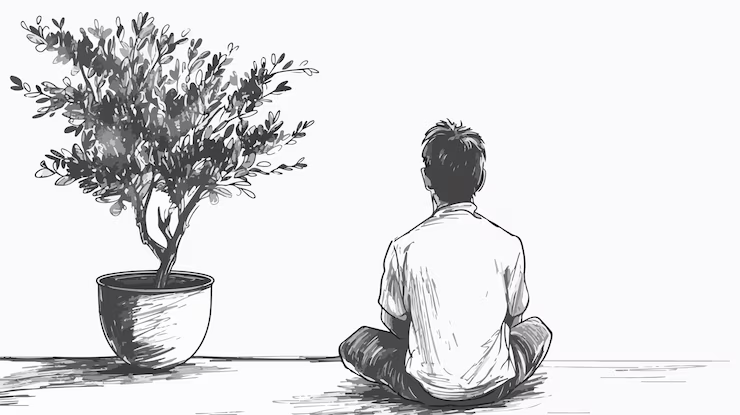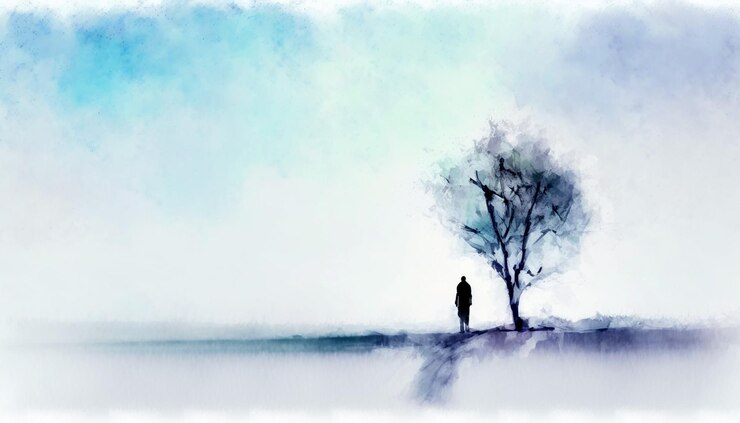Loneliness or Hope in Solitude: The Power of a Single Figure in Sketch Art
Introduction :
One of the most emotionally powerful scenes in sketch art is not of crowds or couples—but of a single figure, alone in a space. Solitude speaks volumes. It can reflect loneliness, strength, grief, peace, or even rebirth.
This blog dives deep into how you can sketch solitary figures to portray intense inner emotions—be it sadness, reflection, healing, or quiet hope.
________________________________________
1. Why Sketch Solitude?
Solitude allows artists to:
• Create emotional depth with minimal elements
• Use space and posture to tell a strong visual story
• Reflect universal human emotions: isolation, resilience, contemplation, peace
Whether the figure is sitting on a bench, gazing into the sky, or curled up in thought—you invite the viewer into their mind.
________________________________________
2. Solitude vs. Loneliness
Though they may look similar in a sketch, they evoke different tones:
Feeling Visual Cues
Loneliness Downcast head, curled posture, dark shading
Solitude Upright back, soft lighting, open space
Hope Face lifted, gentle shadows, light source ahead
Despair Slumped body, enclosed space, strong contrast
What separates them is posture, setting, and light.
________________________________________
3. Powerful Postures to Convey Emotion
Posture Emotion
Sitting curled with knees up Vulnerability, sorrow
Standing with back turned Mystery, withdrawal
Seated, looking into distance Reflection, hope
Hands covering face Overwhelm, grief
Arms open, facing light Surrender, acceptance
Subtle changes in pose shift the entire emotional gravity of the artwork.
________________________________________
4. Step-by-Step: Sketching a Solitary Scene
✏️ Step 1: Choose a Powerful Pose
Select a pose that matches your intent. Use reference images or sketch from imagination.
✏️ Step 2: Define the Environment
Keep it minimal—maybe a bench, a doorway, a single tree, a wall, or empty ground. The emptiness is part of the message.
✏️ Step 3: Light Source and Shadows
Use light to control mood:
• Bright light = hope
• Dim light or backlight = introspection
• Strong contrast = emotional conflict
✏️ Step 4: Add Emotional Touches
Details like slouching shoulders, loose clothing, or messy hair enhance realism and relatability.
________________________________________
5. The Role of Negative Space
In solitude sketches, negative space is storytelling space.
• Large empty areas around the subject = isolation
• Subject in corner or edge = abandonment
• Centered subject in open field = calm reflection
Space speaks. Let your canvas breathe.
________________________________________
6. Symbolism in Solitary Sketches
Symbol Meaning
Open Window Opportunity, escape, hope
Closed Door Isolation, entrapment, rejection
Feather or Leaf Fragility, lightness, drifting
Rain Sadness, cleansing, rebirth
Moonlight Reflection, loneliness, beauty
Shadows The unseen, subconscious, inner fear
These elements can elevate a sketch from silence to narrative.
________________________________________
7. Mood Through Medium
Medium Best For
Graphite Pencil Subtle gradients, soft emotion
Charcoal Bold contrasts, dramatic loneliness
Toned Paper Balanced shadows and highlights
Ink Graphic clarity, minimalist solitude
Digital Brushes Atmospheric mood with lighting effects
Experiment with texture and brush type to match the emotional tone.
________________________________________
8. Sketch Concepts to Try
Here are some powerful sketch ideas you can practice:
• A girl sitting alone with her back to the viewer, watching the rain
• An old man leaning on a cane, shadow long behind him
• A child standing at a window with a toy in hand
• A woman sitting in a doorway, looking out toward the light
• A cloaked figure walking alone on a foggy path
Each one is ripe with emotion and symbolic potential.
________________________________________
9. Solitude Sketches in Art & Life
Where these drawings resonate:
• Book covers (especially poetry or memoir)
• Mental health awareness art
• Exhibition work on themes of grief, hope, or silence
• Personal journals and zines
• Therapeutic sketching for self-expression
They’re not just images—they’re emotional anchors.
________________________________________
10. Final Thought: The Soul in Silence
Solitude in sketch art is about holding space for feeling. Whether you want to portray a broken heart, a spiritual awakening, or just a moment of stillness, one figure alone in a thoughtful pose can say more than a crowded scene ever could.
💬Let the silence speak. Let the pencil pause. Let the space around your figure say what words cannot.
Solitude isn't empty—it’s a canvas of quiet truths.
